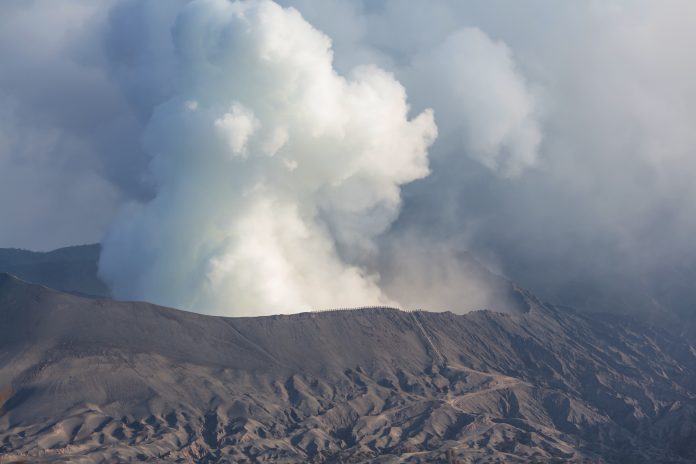NCREE (National Center for Research on Earthquake Engineering) explain how they have developed an Earthquake Early Warning System which can estimate the oncoming waves
NCREE have developed an on-site Earthquake Early Warning System (On-site EEWS), which can detect the first coming P-wave of an earthquake and estimate the strength (Peak Ground Acceleration, PGA) of a following strong wave in 1-3 seconds. An On-site Earthquake Early Warning System composed of the sensing (seismic sensors), processing (PGA estimation of the following S-wave) and Action (warning people, relay control to mitigate the seismic loss) as shown in Figure 1.
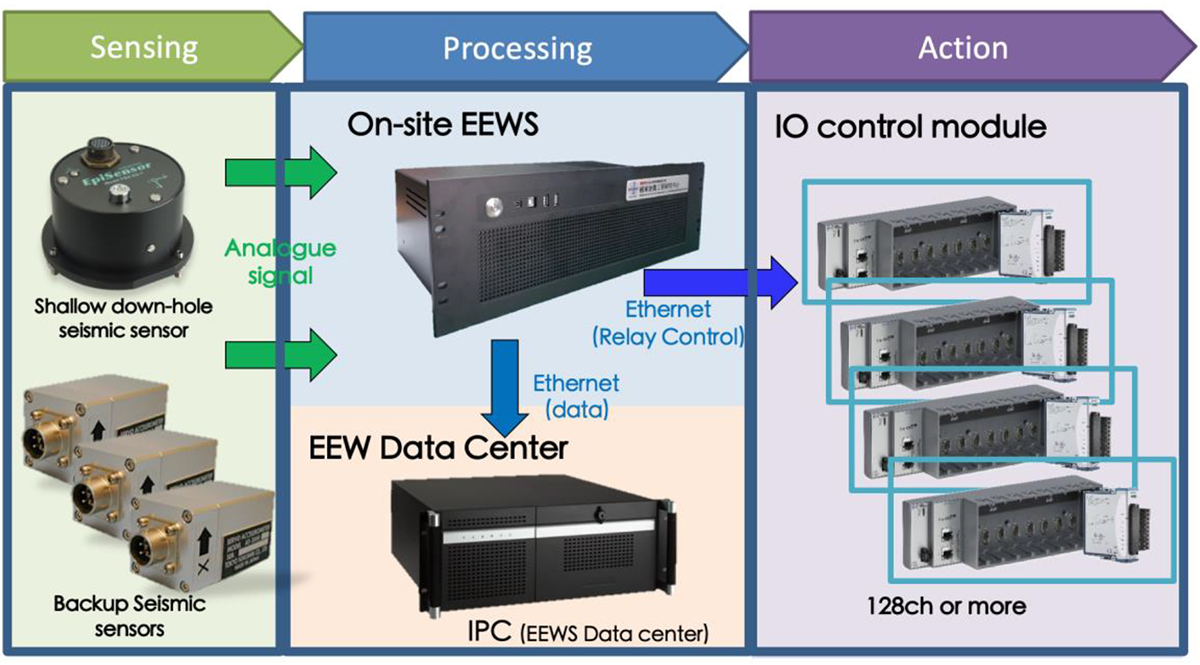
Multiple seismic sensors
Multiple seismic sensors are applied in various positions for a double-check to mitigate false alarm. The processing unit will collect the first-three seconds of P-wave (the blue area as shown in Figure 2) and provide estimate PGA for warning immediately. After this, the peak ground acceleration arrives, and the time difference between estimated PGA and real PGA is called the warning time- essentially how much time we can provide in advance.
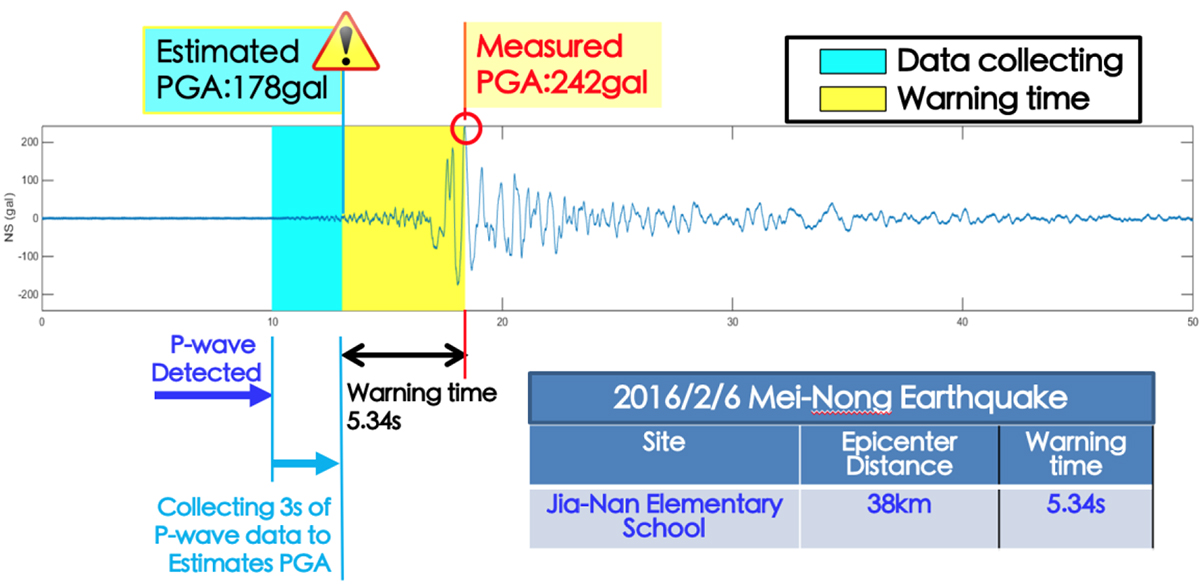
In the case of figure 2, the epicentre distance was 38km, where inside the so-called EEWS blind zone, NCREE’s on-site EEWS could still provide 5.34s. With the epicentre distance increasing to 100km, the warning time can increase to ~15s. NCREE have more than 300,000 earthquake time histories in Taiwan.
Through this seismic database and the AI tech (NN and SVM), the EEWS model for Taiwan can be accurately made. Before 2012, numerical and shake table test validations for the EEWS model had been done. From 2013, more and more on-site EEWS’s had been installed, validated and refined in field. As of 2019, more than 100 on-site EEWS have been installed by NCREE and serve for 3500 schools, 20 fire departments, 15 office building, 6 semiconductor plants and a high-speed railway.
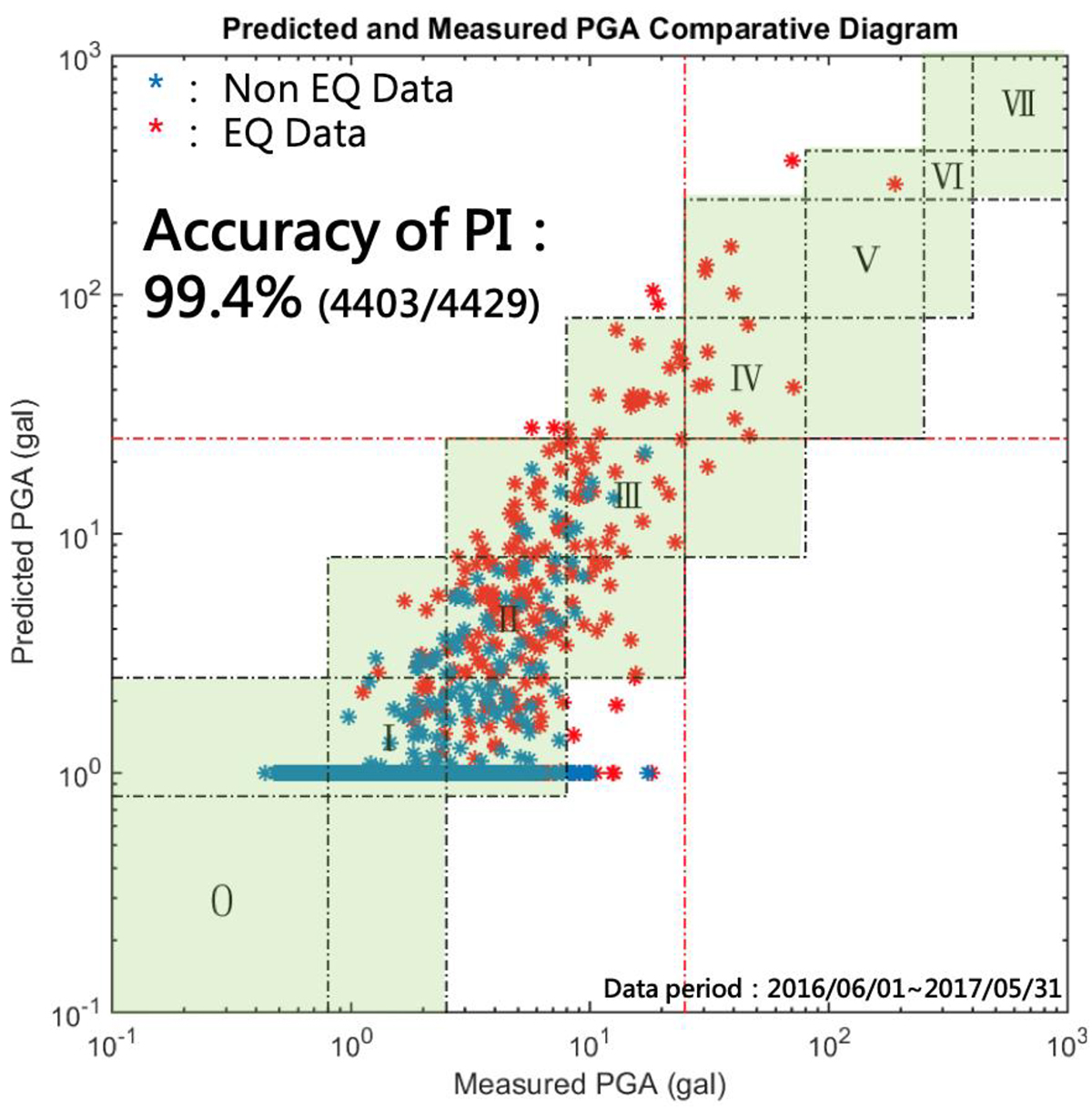
The annual estimation accuracy was made for several years as shown in Figure 3. The estimated and measured PGA data were always in agreement.
As the on-site EEWS were successfully applied without the need of a seismic network, NCREE would like to share this with the other countries which are subjected to seismic hazards and lack access to the EEWS service. The first oversea cooperation was established between ISR (Institute of Seismology Research Gujarat, India) and NCREE in 2018. NCREE provide one on-site EEWS, installed in the seismic station of ISR. The on-site EEWS sent a continuous trigger signal, estimated PGA and 3-dir.
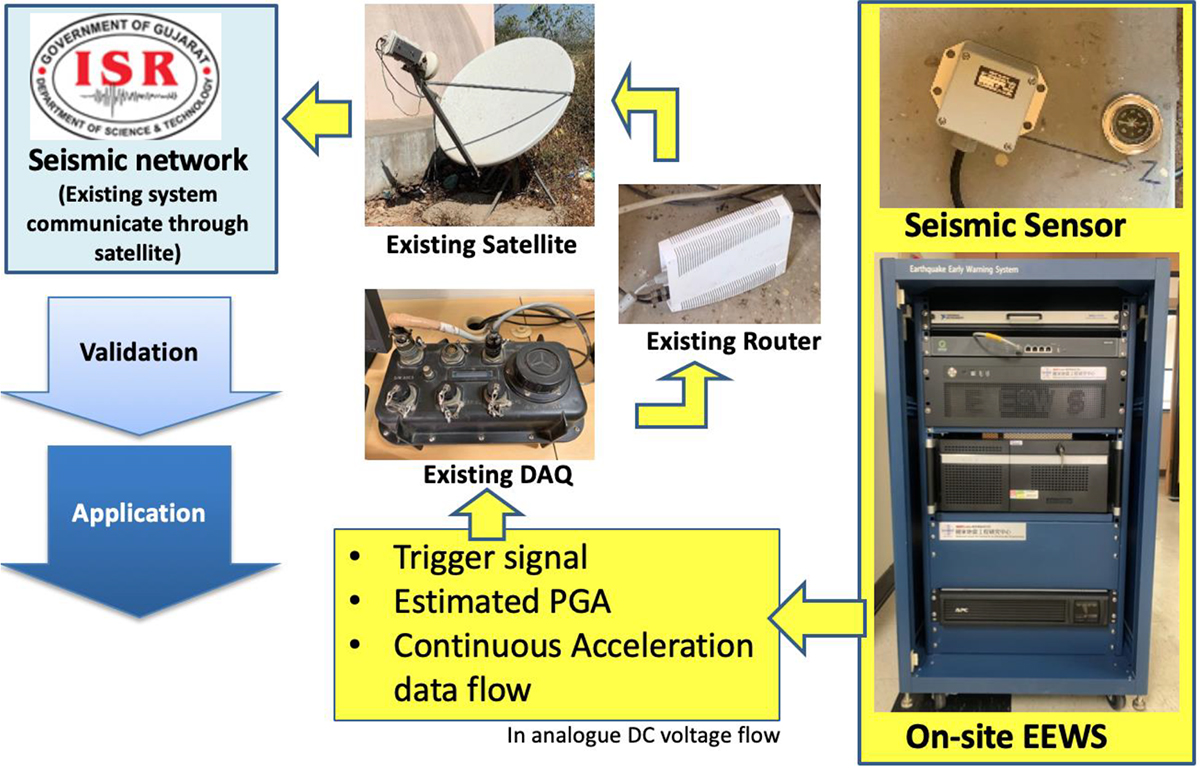
Acceleration through ISR’s DAQ and satellite communication back to the Seismic monitoring server in ISR (As shown in Figure 6). Resultantly, ISR can receive the acceleration time histories with the EEWS message (estimated PGA) with the same time and same system. The same system setup has been designed for validation in India. It is believed, with one year of validation, ISR and NCREE will step forward for the application of on-site EEWS in India.
*Please note: This is a commercial profile

